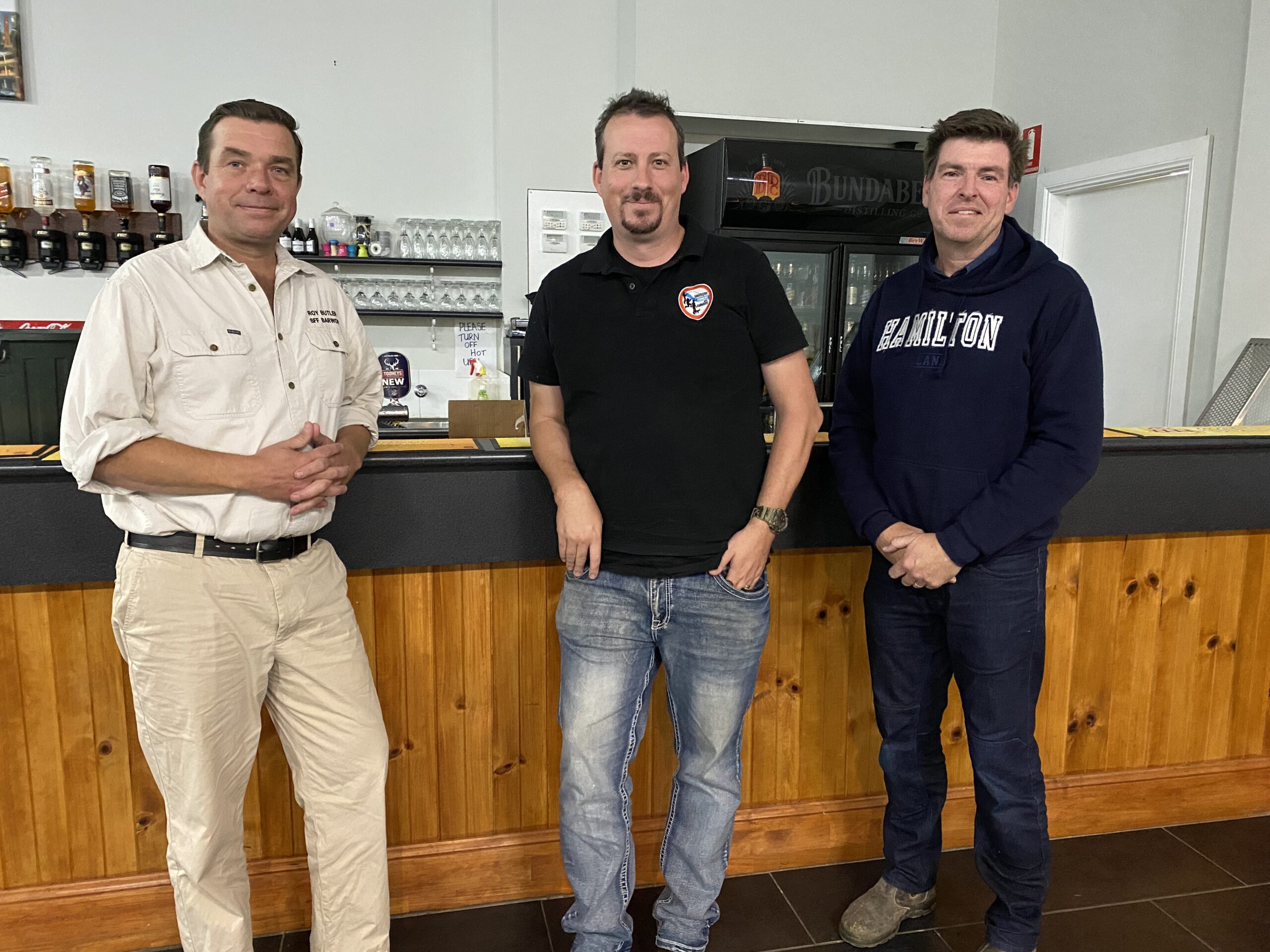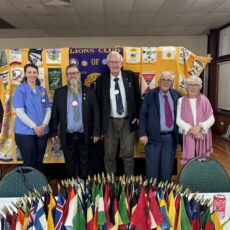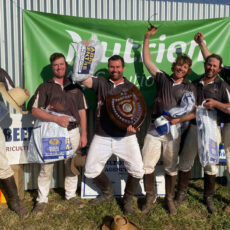Community members met with Shooters, Fishers and Farmers’ representatives Roy Butler and Mark Banaziak at The Imperial Hotel last week to discuss concerns about Wee Waa High School.
Attendees raised a number of topics including the impact of ongoing disruptions at WWHS on students’ welfare, proposed locations for a new site and what facilities should be on offer if a new school is built.
Member for Barwon Roy Butler said he would be urging the Minister for Education to seek local feedback and knowledge about the best location for a new school site after a number of attendees described a potential location as ‘a swamp’.
“What you can’t skimp on is consultation,” Mr Butler told the Wee Waa News.
“You need to make sure that the community is with you 100 per cent of the way and what you’re building reflects what the community wants.”
About a dozen people attended the meeting and some said they’d seen surveyors looking at a site on Mitchell Street, known locally as “the swamp”, and told
Mr Butler it was ‘ruled out’ as a building site in the 1970s and weren’t convinced it would be a suitable location if a new school is built.
“At the front of my mind is the importance of meaningful consultation with the community,” said Mr Butler.
“Actually engaging with people who have lived in the town for a long time and have watched water move through the town when we’ve got a lot of it. And if this site is not suitable, it’s really up to government to demonstrate how they are going to get around that as an issue.
“If they can mitigate the dampness issue given it is a water collection point, they need to convince the people of the community that they can do that and if they can’t then they probably should look at another site.”
WWHS parent Tim Weaver told the Wee Waa News after the meeting that he hoped the government’s priority would be finding the most appropriate site rather than a quick fix.
“I think it’s important that we don’t rush it and we don’t see it as a box ticking exercise where it’s about quickly getting the school up and done on a site that’s not going to be right,” said Mr Weaver.
“If we put it on the site that was mentioned tonight that could be swampy, in fact, it probably looks swampier than where the school is at the moment.
“I think there’s a lot of hydraulic engineering that needs to be considered in years to come if it still draws up through these soil types into the building structure.
“I think the community would rather that it be carefully consulted and considered over time rather than being rushed through or the community shown how it will be mitigated.”
WWHS campus has been closed since term four in 2020 after a considerable number of staff and students suffered symptoms believed to be from exposure to mould including respiratory issues, rashes and headaches.
Investigations are still ongoing regarding the exact source of the problem.
Mr Butler said the Local Health District is now involved and a group has been formed to commence environmental investigations and engagement with the community.
“You would’ve heard tonight (at the meeting) that some people were saying this has been going on for decades.
“So if it’s a decades old issue then the question has got to be asked: ‘why wasn’t something done sooner?’,” said Mr Butler.
The school has been relocated to Wee Waa Public School campus this year.
“I have made it clear to the local community we are looking at options for a new high school on a new site, and we are currently exploring the scope of this project,” said Minister for Education Sarah Mitchell.
“We are in the process of ensuring that the project is ready to go ahead should the old high school site not be able to be remediated.
“I am in constant communication with the Department of Education on the issues at Wee Waa High School.
“I’ve asked for the community to be regularly updated on any developments, and that support is provided to the principals of both schools as they manage this challenge.
“Wee Waa High School principal Annabel Doust is doing an excellent job supporting her staff, students and community during this time.”
Attendees at last Monday’s meeting acknowledged the wonderful work and positive attitudes of teachers, staff and children at WWHS and WWPS considering the incredibly difficult circumstances including having to share a campus, health concerns, ambulances being called to the school and a previous arrangement that saw high school students using a less than ideal portable toilet set-up in 45 degree heat.
“I can only praise the parents, teachers and students for their resilience and ability to be flexible with what’s been going,” said Mr Butler.
Mr Butler said he “100 per cent” understood the anxiety and frustration of the school community.
“I’ve got kids in school,” said Mr Butler.
“What we’ve seen here though isn’t like any other situation in NSW because not only were these kids smashed by drought then we had a pandemic, these kids, in particular, have actually had to change sites part way through a year – that’s a massive disruption to their learning.”
Following the meeting, Mr Butler said he would again be asking the Minister for Education for a review to be made regarding the Australian Tertiary Admission Rank scores of last year’s Year 12 students, and the need for special dispensation.
“I have asked the Minister, so that was a commitment she gave me probably back in January that she would go and see if that decision could be reviewed because you know the disruption they’ve had is so unique to Wee Waa, it’s not like any other school.
“Everyone in regional Australia has had COVID and drought, but also what about the impact of pulling kids out of a building that they’re studying in and trying to move them to another at a critical point in their schooling?”
WWHS parent Tim Weaver said the school environment is “a lot safer” now the students are based at the WWPS campus and thankfully his children don’t seem to have suffered any health issues at this point.
“It’s what they’ve been exposed to and the monitoring which is probably the biggest concern and the long-term effects that could develop that are chronic – that’s concerning.
“That would be a big concern, deposits of anything from breathing in the mould when they were at the other site.”
Mr Weaver raised a popular point at the meeting about the need for a new school to include state-of-the-art agricultural facilities that aligned with local industry because Wee Waa is “the gateway” to a diverse agriculture area.
“I think it’s an exciting opportunity to build something that could be a real showpiece for our area and the government, and really a great example of taking a small rural centre and turning it into a centre that’s
well-equipped,” he said.
“We’ve got the head-offices of a number of businesses like CGS, CSD, Growth Agriculture in Wee Waa, as well as CSIRO, NSW DPI and the University of Sydney in the surrounding shire that are embracing digital ag technologies.”
“We have the space to do it and the possibility of linkages with industry.
“With the digital transformation era that we’re seeing in ag, why not showcase a brand new high school that encompasses working in the digital realm?
“Eventually tractors won’t have drivers, there will be robotics and you don’t want to be ringing an expert in Singapore to fix a tractor online because they’re the only ones that have that knowledge.
“We’ve got to support our young men and women, we want to keep them local so why not build a high school that links up with CSIRO, NSW DPI or Sydney University and keep, and attract, people to our region?
“Or even as was mentioned tonight, an ag boarding school set-up where students from farms who are out further west towards Walgett could just come in for the week and it is easy to get back home for the weekend.
“It’s not as big a drive to Toowoomba, Sydney or the Gold Coast for boarding schools because it’s right here.
“I think it’s an opportunity to build and showcase a really good digital agriculture school or college,” said Mr Weaver.
To order photos from this page click here










